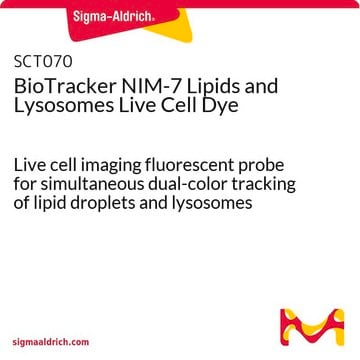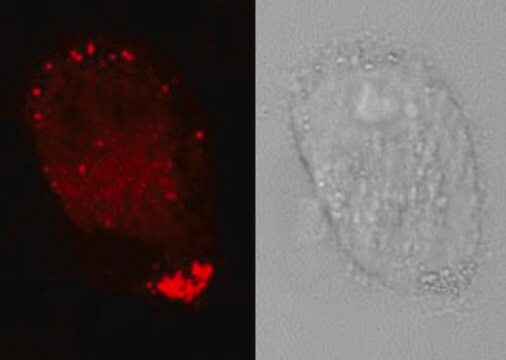46943
Fluorescein dilaurate
suitable for fluorescence, ≥97.0% (HPCE)
About This Item
Recommended Products
Assay
≥97.0% (HPCE)
form
powder
solubility
ethanol: soluble
fluorescence
λex 490 nm; λem 514 nm in 0.1 M Tris pH 8.0 (esterase)
suitability
suitable for fluorescence
SMILES string
CCCCCCCCCCCC(=O)Oc1ccc2c(Oc3cc(OC(=O)CCCCCCCCCCC)ccc3C24OC(=O)c5ccccc45)c1
InChI
1S/C44H56O7/c1-3-5-7-9-11-13-15-17-19-25-41(45)48-33-27-29-37-39(31-33)50-40-32-34(49-42(46)26-20-18-16-14-12-10-8-6-4-2)28-30-38(40)44(37)36-24-22-21-23-35(36)43(47)51-44/h21-24,27-32H,3-20,25-26H2,1-2H3
InChI key
MYTRGBGGRICZGN-UHFFFAOYSA-N
Looking for similar products? Visit Product Comparison Guide
Related Categories
Application
Storage Class Code
11 - Combustible Solids
WGK
WGK 3
Flash Point(F)
Not applicable
Flash Point(C)
Not applicable
Personal Protective Equipment
Certificates of Analysis (COA)
Search for Certificates of Analysis (COA) by entering the products Lot/Batch Number. Lot and Batch Numbers can be found on a product’s label following the words ‘Lot’ or ‘Batch’.
Already Own This Product?
Find documentation for the products that you have recently purchased in the Document Library.
Customers Also Viewed
Our team of scientists has experience in all areas of research including Life Science, Material Science, Chemical Synthesis, Chromatography, Analytical and many others.
Contact Technical Service










